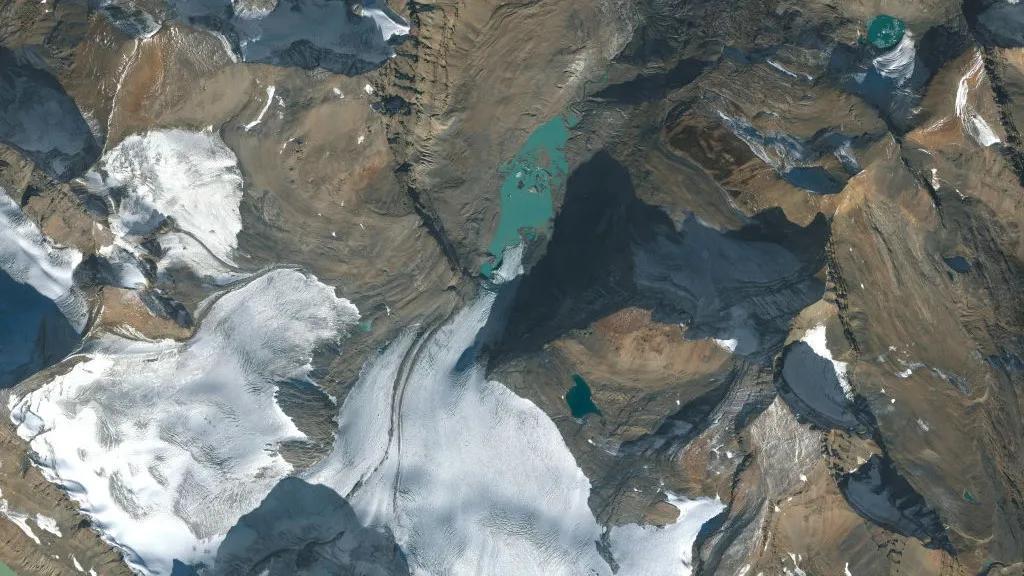
North America & Europe’s Glaciers Lost Unprecedented Ice in 4 Years: Study
The world is facing an unprecedented climate crisis, and the latest research on glaciers in North America and Europe only adds to the growing concerns. According to a new study, glaciers in Washington, Montana, British Columbia, Alberta, and the Swiss Alps lost an astonishing amount of ice over the past four years. The staggering figures reveal that glaciers in these regions lost twice the amount of ice recorded between 2010 and 2020.
Published in the journal Geophysical Research Letters, the study analyzed data from 2021 to 2024 and found that the loss of ice was “unprecedented” in recent history. The research focused on glaciers in the United States, Canada, and the Swiss Alps, which are significant contributors to global sea-level rise.
Alarming Rates of Ice Loss
The study found that US and Canadian glaciers lost an average of 24.5 billion tons of ice per year between 2021 and 2024. This is a staggering figure, equivalent to about 10% of the total ice loss in the region between 2010 and 2020. The Swiss Alps glaciers, on the other hand, lost an average of 1.7 billion tons of ice annually.
The researchers used advanced satellite imaging and computer modeling to track changes in glacier mass and extent. They found that some glaciers in the region shrank by as much as 13% between 2021 and 2024, with many others experiencing significant declines.
Consequences of Glacier Loss
The loss of ice from these glaciers has significant implications for the environment and human societies. Melting glaciers contribute to sea-level rise, which can lead to more frequent and severe coastal flooding, erosion, and saltwater intrusion into freshwater sources. Additionally, the loss of glaciers can disrupt local ecosystems and threaten the livelihoods of people who depend on them.
Glaciers also play a crucial role in regulating global temperatures. As they melt, they release freshwater, which can affect ocean currents and potentially alter regional climate patterns. The rapid loss of ice from these glaciers could have far-reaching consequences for global climate stability.
Causes of Glacier Loss
So, what’s driving this unprecedented loss of ice? The study’s authors point to a combination of factors, including:
- Rising global temperatures: The average global temperature has risen by about 1°C since the late 1800s, with most of this increase occurring since the 1980s. This warming is melting glaciers at an alarming rate.
- Climate change: The study notes that climate change is the primary driver of glacier loss, with human activities such as burning fossil fuels and deforestation contributing to the problem.
- Weather patterns: Extreme weather events, such as heatwaves and droughts, can also contribute to glacier loss by reducing snowfall and increasing melting.
What Can We Do?
The study’s findings are a stark reminder of the urgent need to address climate change. While the situation may seem dire, there are steps we can take to mitigate the effects of glacier loss:
- Reduce greenhouse gas emissions: Transitioning to renewable energy sources and reducing our reliance on fossil fuels can help slow the rate of global warming.
- Preserve and restore natural habitats: Maintaining and restoring natural ecosystems, such as forests and wetlands, can help regulate the climate and support biodiversity.
- Support glaciology research: Continued research into glacier dynamics and climate change can help us better understand the impact of human activities on these critical ecosystems.
Conclusion
The loss of ice from North America and European glaciers is a pressing concern that requires immediate attention. The study’s findings highlight the need for global action to reduce greenhouse gas emissions and mitigate the effects of climate change. As we move forward, it’s essential that we prioritize glaciology research, preserve natural habitats, and support initiatives that promote sustainable development.
Source:
https://agupubs.onlinelibrary.wiley.com/doi/10.1029/2025GL115235






